Related Research Articles
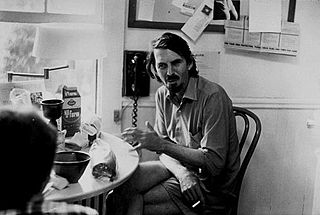
Robert White Creeley was an American poet and author of more than sixty books. He is usually associated with the Black Mountain poets, though his verse aesthetic diverged from that school. He was close with Charles Olson, Robert Duncan, Allen Ginsberg, John Wieners and Ed Dorn. He served as the Samuel P. Capen Professor of Poetry and the Humanities at State University of New York at Buffalo. In 1991, he joined colleagues Susan Howe, Charles Bernstein, Raymond Federman, Robert Bertholf, and Dennis Tedlock in founding the Poetics Program at Buffalo. Creeley lived in Waldoboro, Buffalo, and Providence, where he taught at Brown University. He was a recipient of the Lannan Foundation Lifetime Achievement Award.

David Mansfield Bromige was a Canadian-American poet who resided in northern California from 1962 onward. Bromige published thirty books, many so different from one another as to appear to be the work of a different author. Associated in his youth with the New American Poetry and especially with Robert Duncan and Robert Creeley, Bromige is sometimes associated with the language poets, but this connection is based more on his close friendships with some of those poets, and their admiration for his work. It is difficult to fit Bromige into a slot. He departs from language poetry in the thematic unity of many of his poems, in the uses to which he puts found materials, with the romantic aspect of his lyricism, and with the sheer variety of his approaches to the poem.
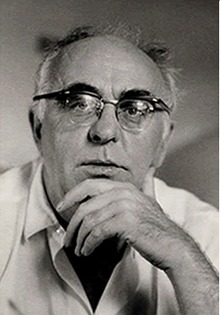
Charles Olson was a second generation modernist American poet who was a link between earlier modernist figures such as Ezra Pound and William Carlos Williams and the third generation modernist New American poets. The latter includes the New York School, the Black Mountain School, and some of the artists and poets associated with the Beat generation and the San Francisco Renaissance.

The Black Mountain poets, sometimes called projectivist poets, were a group of mid-20th-century American avant-garde or postmodern poets centered on Black Mountain College in North Carolina.
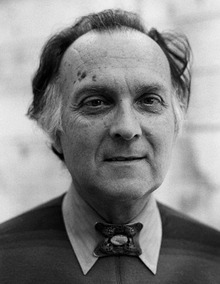
Robert Edward Duncan was an American poet and a devotee of Hilda "H.D." Doolittle and the Western esoteric tradition who spent most of his career in and around San Francisco. Though associated with any number of literary traditions and schools, Duncan is often identified with the poets of the New American Poetry and Black Mountain College. Duncan saw his work as emerging especially from the tradition of Pound, Williams and Lawrence. Duncan was a key figure in the San Francisco Renaissance.

Edward Merton Dorn was an American poet and teacher often associated with the Black Mountain poets. His most famous work is Gunslinger.

Paul Blackburn was an American poet. He influenced contemporary literature through his poetry, translations and the encouragement and support he offered to fellow poets.

The New American Poetry 1945–1960 is a poetry anthology edited by Donald Allen and published in 1960. It aimed to pick out the "third generation" of American modernist poets, and included quite a number of poems fresh from the little magazines of the late 1950s. In the longer term it attained a classic status, with critical approval and continuing sales. It was reprinted in 1999. As of 2024, Edward Field and Gary Snyder are the only contributors still living.
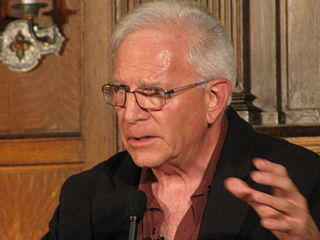
Michael Palmer is an American poet and translator. He attended Harvard University, where he earned a BA in French and an MA in Comparative Literature. He has worked extensively with Contemporary dance since the 1970s and has collaborated with many composers and visual artists. Palmer has lived in San Francisco since 1969.

Harold Witter Bynner, also known by the pen name Emanuel Morgan, was an American poet and translator. He was known for his long residence in Santa Fe, New Mexico, and association with other literary figures there.

Stephen Rodefer was an American poet and painter who lived in Paris and London. Born in Bellaire, Ohio, he knew many of the early beat and Black Mountain poets, including Allen Ginsberg, Gregory Corso, Charles Olson, and Robert Creeley. Rodefer was one of the original Language poets and taught widely, including: UNM, SUNY Buffalo, UC Berkeley, UC San Diego, San Francisco State, and the American University of Paris. Rodefer was the first American poet to be offered a Fellowship at Cambridge University.
The Jargon Society is an independent press founded by the American poet Jonathan Williams. Jargon is one of the oldest and most prestigious small presses in the United States and has published seminal works of the American literary avant-garde, including books by Charles Olson, Louis Zukofsky, Paul Metcalf, James Broughton, and Williams himself, as well as sui generis books of folk art such as White Trash Cooking.

John Brandi is an American poet and artist. San Francisco Poet Laureate Jack Hirschman has said of Brandi:
He has been an open roader for much of his life and like his two great forebears, Whitman and Neruda, has named the minute particulars, the details of his sojournings … infusing them with a whole gamut of feelings— compassionate, mischievous, loving and righteous. It's what's made his poetry one of the solid bodies of work that's emerged from the North American West since the '60s.

Richard Denner is an American poet associated with the Berkeley Street Poets and the Poets of the Pacific Northwest. He is the founder and operator of dPress, which has published over two hundred titles, mostly of poetry and most in chapbook format.

Allan Graham, known also as Toadhouse, is a contemporary American artist based in New Mexico. His work includes sculpture, painting, poetry, and video.
Robert Peterson was a widely anthologized American poet.
Miriam Sagan is a U.S. poet, as well as an essayist, memoirist and teacher. She is the author of over a dozen books, and lives and works in Santa Fe, New Mexico. She is a founding member of the collaborative press Tres Chicas Books.
James Koller was an American poet. He spent his early life in northern Illinois, and the 1960s on the Pacific Coast. In the early-1970s he moved to Maine, where he lived until his death while traveling across the US. Koller is the author of more than thirty books of poetry. He has also published three novels and numerous essays. His writing has been translated into Italian, French, Spanish, German and Swedish. He began performing his work in the US in 1959, and starting in the late-1970s appeared widely in western Europe, often accompanied by others, notably the late Swiss poet and artist Franco Beltrametti, the German poet Stefan Hyner and the folk musician Governor Clay. He was publisher of Coyote Books and Coyote's Journal since 1964. Many of his Beat, Black Mountain and San Francisco contemporaries have appeared in these publications.
Oli Sihvonen was a post-World War II American artist known for hard-edge abstract paintings. Sihvonen's style was greatly influenced by Josef Albers who taught him color theory and Bauhaus aesthetics at Black Mountain College in the 1940s. Sihvonen was also influenced by Russian Constructivism, Piet Mondrian, and Pierre Matisse. His work has been linked to Abstract Expressionism, Minimalism, Hard-Edge and Op-Art.
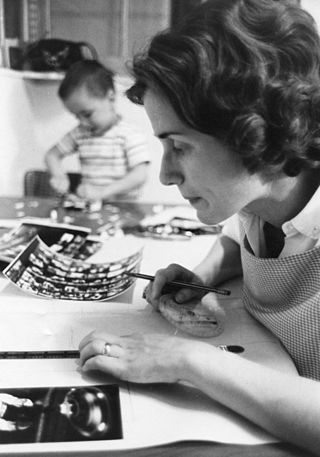
Nancy Wood was an American author, poet, and photographer. Wood published numerous collections of poetry as well as children's novels, fiction, and nonfiction. Major themes and influences in her work were the Native American cultures of the Southwestern United States.
References
- ↑ Poling, Charles (September 28, 2021). "Flashbacks". New Mexico Magazine. Retrieved January 16, 2023.